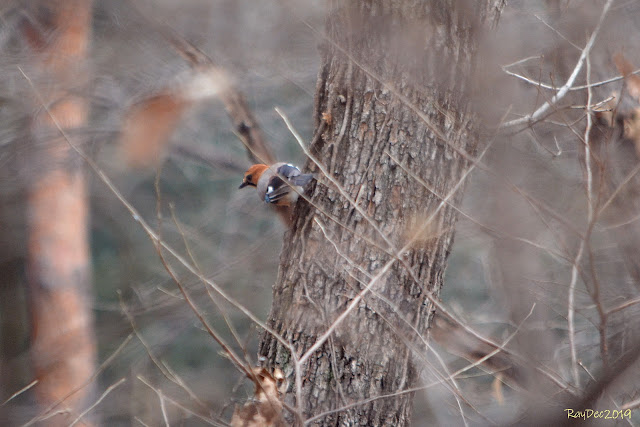Byoungwoo, our excellent bird guide, took us to one of the big royal tombs and we saw a lot of woodland birds there!
Great Spotted Woodpeckers (Akageraアカゲラ)
White-backed Woodpeckers (Ooakageraオオアカゲラ)
After a white-backed woodpecker pecked the tree a bit, a Grey-headed Woodpecker (Yamageraヤマゲラ) took over the place! what a bully!
a bit like Humpty Dumpty...

male Red-flanked Bluetail (Ruribitakiルリビタキ)
Nuthatch (Gojukaraゴジュウカラ)
male Elegant Bunting (Miyama-hoojiroミヤマホオジロ) or Yellow-throated Bunting
Jay (Kakesuカケス)
Water Deer (Kibanoroキバノロ)
Water deer are an endangered species in China but, according to Byoungwoo, they are thriving in South Korea. We saw them quite a few times although they are thought to be very shy. We may have been very lucky:)
King's tomb
The shrines and tombs for high class people have a stone corridor straight from the main shrine building, which is apparently a path for the sacred spirits to be led to the shrine. Interesting.
Korean lunch - dried cod soup & kimchi & little dishes
Korean light supper - cold noodles with chili paste covered with nori seaweed
Thanks to Byoungwoo, we really had a great time in South Korea. Nearly 60 species of birds in two days, some of which were lifers for us. It is a very good number considering the fact that Japan and Korea share many species. And of course we totally enjoyed his excellent choice of Korean cuisine as well!
Byoungwoo's Birding Korea site is here:
https://www.birdingkorea.com/






























































